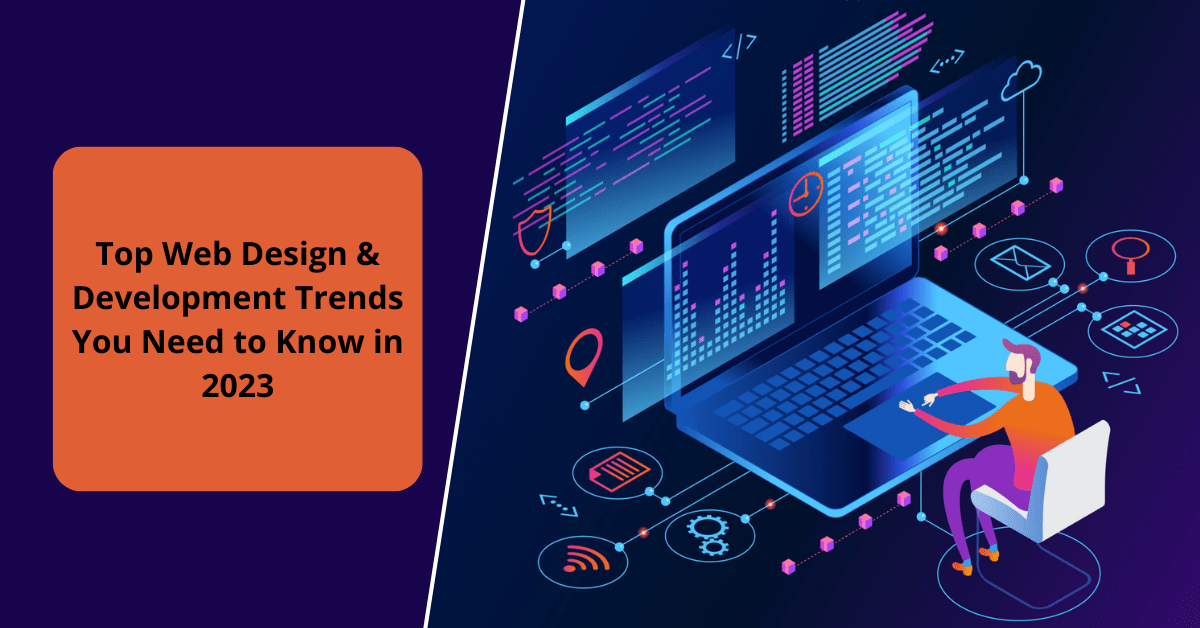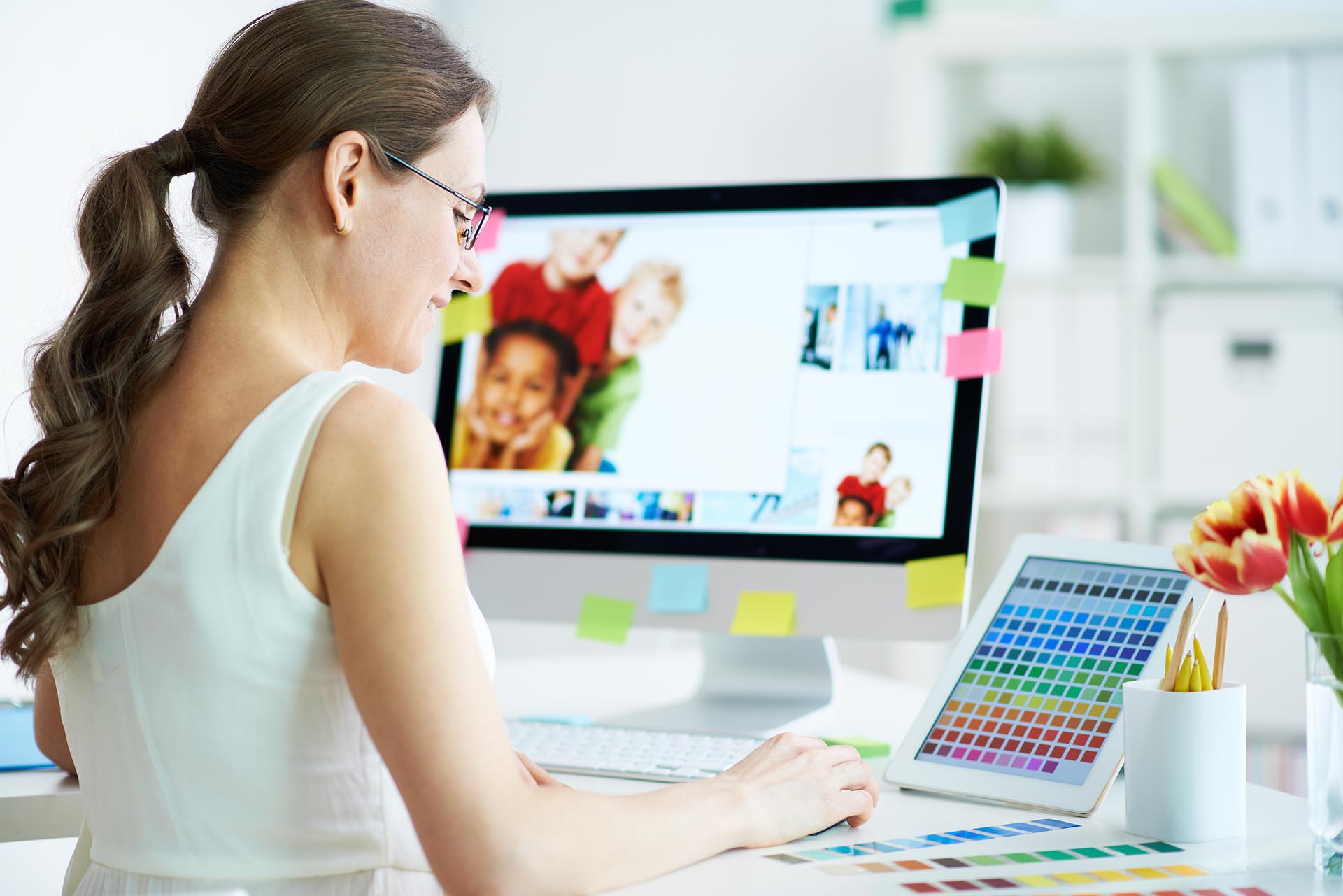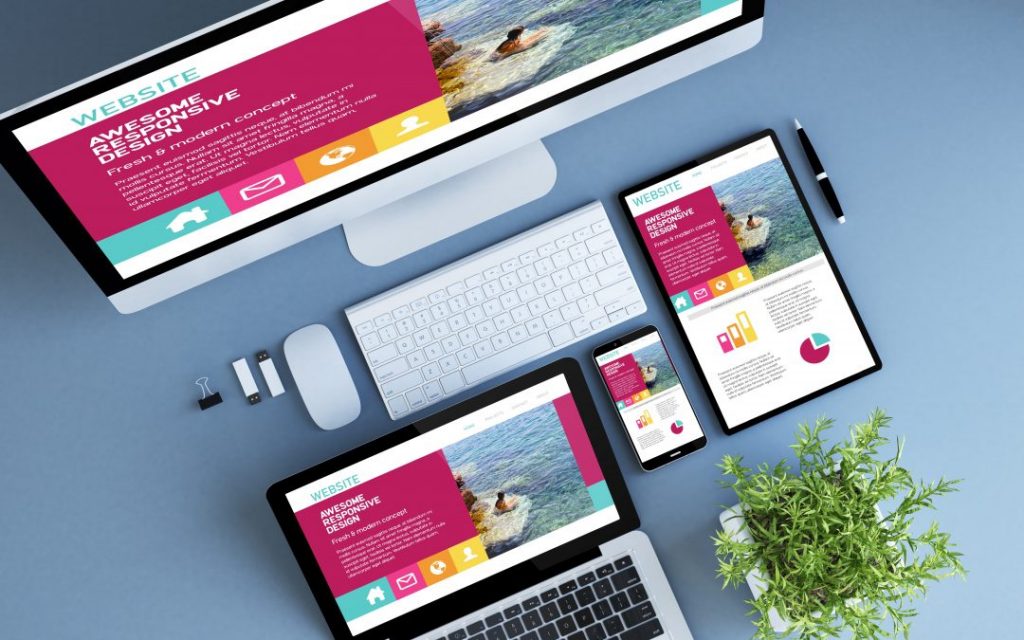The advantages of web development for creating scalable websites
Exploring the Different Sorts Of Website Design and Their Special Advantages
The landscape of Web layout encompasses a range of designs, each offering unique advantages that deal with various user requirements. Minimal and level layouts highlight quality, while receptive and worldly layouts boost flexibility throughout tools. Illustrative and typography-driven techniques aim to enhance interaction and psychological vibration. Comprehending these diverse types can significantly affect individual experience and brand assumption. What exists underneath the surface of these style options?
Minimalist Website Design

Minimalist website design often integrates a limited color combination and simple typography, which not only improves visual appeals but additionally reinforces brand name identity. The lowered intricacy can result in faster loading times, further improving user complete satisfaction. Additionally, by reducing aesthetic clutter, users can involve with content better, resulting in boosted comprehension and retention. On the whole, minimalist website design cultivates a seamless customer experience, making it a prominent selection for brands intending to communicate quality and professionalism in their online existence.
Responsive Web Layout
Receptive website design has actually become necessary in today's digital landscape, making certain mobile compatibility for customers throughout various gadgets. This approach considerably boosts user experience by supplying smooth navigation and ease of access, despite screen size. As even more individuals access the Web on mobile phones and tablet computers, the value of receptive style proceeds to expand.

Mobile Compatibility Significance
As mobile tool use proceeds to rise, guaranteeing web sites work with different screen dimensions has ended up being vital for reliable communication and engagement. Mobile compatibility, typically accomplished through receptive website design, permits internet sites to adapt flawlessly to smartphones, tablets, and various other tools. This flexibility not just gets to a broader audience but likewise enhances brand reputation. A site that functions well on mobile gadgets shows professionalism and attention to user needs. In enhancement, online search engine focus on mobile-friendly sites in their rankings, making compatibility a crucial element for online visibility. By investing in mobile compatibility, services can enhance their digital visibility and deal with the expanding variety of individuals that access info on the go. As a result, focusing on mobile-responsive layout is crucial in today's electronic landscape.
Improved Customer Experience

Flat Style
Level style is a minimal method to website design that emphasizes simplicity and clearness. By removing three-dimensional aspects such as structures, shadows, and slopes, level layout develops an aesthetically appealing interface that focuses on web content and functionality. This style promotes an user-friendly navigation experience, as customers can rapidly determine vital attributes and actions without distraction.
One of the main benefits of level design is its responsiveness across different tools and display dimensions. Its uncomplicated formats and clean lines adjust perfectly, making sure a consistent experience for individuals on mobile, tablet, or desktop computer systems. In addition, level layout commonly includes strong colors and typography, improving visual impact and brand name acknowledgment.
The simpleness integral in level style leads to much faster filling times, which adds favorably to individual contentment. Generally, level layout continues to be a popular selection for modern-day Web advancement, aligning with modern visual preferences while providing superb functionality
Material Layout
Product Design represents a design language created by Google that concentrates on producing a instinctive and cohesive customer experience across digital systems. This method emphasizes using grid-based layouts, responsive animations, and depth results such as illumination and shadows, which assist to create a feeling of pecking order and spatial partnerships. By resembling the real world, Product Design permits users to connect with digital user interfaces in a more all-natural and appealing way.
One of the essential advantages of Product Style is its adaptability across numerous tools and screen sizes, ensuring a regular experience for users. Furthermore, it advertises a clear visual language that enhances use, making it less complicated for users to navigate complex applications. The consolidation of vivid colors and vibrant typography also plays a crucial duty in accentuating essential elements, thus boosting total user interaction - website design. Product Layout has come to be a preferred selection among designers seeking to produce practical and aesthetically attractive websites.
Typography-Driven Layout
Typography-Driven Style concentrates on the calculated use kind to boost the visual and practical facets of a web site. This layout strategy focuses on fonts, font dimensions, spacing, and hierarchy to produce visual interest and overview user experience. By meticulously selecting typography, developers can communicate brand name identity and evoke feelings, making the web content a lot more obtainable and interesting.
Efficient typography improves readability and use, making sure that individuals can easily Visit Website soak up and browse the site information. The ideal mix of kind can likewise establish a clear aesthetic power structure, enabling Get More Information users to quickly determine essential messages and calls to action.
Moreover, a typography-driven strategy can be adjusted to various gadgets, making certain uniformity throughout systems. This versatility is important in today's multi-device landscape, where customer experience is critical. Inevitably, Typography-Driven Layout offers not just as an artistic choice but additionally as a practical component that considerably influences a site's effectiveness.
Illustratory Website Design
Illustrative website design employs aesthetic storytelling techniques that can substantially enhance individual interaction. By incorporating unique pictures, internet sites can create a memorable brand name identity that resonates with their audience. This method not only astounds site visitors but also interacts messages in a visually compelling fashion.
Visual Storytelling Strategies
A plethora of Web developers utilize aesthetic narration methods to create appealing and immersive customer experiences. This approach incorporates images, typography, and design to tell a story that reverberates with individuals on an emotional level. By incorporating compelling visuals, designers can properly share messages and stimulate sensations, assisting visitors via a brand name's journey. Infographics, computer animations, and interactive components offer to enhance narratives, making complicated info more remarkable and easily accessible. In addition, aesthetic storytelling can establish a cohesive brand identification, as constant images and themes enhance core values and messages. Ultimately, this method not just captivates customers yet additionally cultivates a deeper link with the material, urging exploration and retention. Through competent application, visual narration transforms typical Web experiences into significant and vibrant interactions.
Enhancing Individual Engagement
Efficient website design considerably enhances customer involvement by leveraging illustrative components that draw focus and foster interaction. Images can simplify complicated concepts, making them extra unforgettable and approachable for individuals. They break the uniformity of text-heavy web pages, developing visual breaks that welcome exploration. Additionally, one-of-a-kind illustrations can evoke feelings, encouraging users to attach with the content on a deeper degree. Interactive elements, such as computer animations or float results, can likewise improve engagement by inviting customers to take part actively as opposed to passively consuming details. This strategy not only maintains site visitors on the website longer however also boosts the possibility of return check outs. Inevitably, reliable illustratory Web style changes the user experience, making it much more enjoyable and impactful.
Branding Through Illustration
Aesthetic components play a significant role fit a brand name's identification, and images are a powerful tool hereof. Illustrative Web design enables brands to share their unique personality and values via customized artwork. This approach promotes a deeper emotional Discover More Here link with the target market, improving memorability and interaction. By integrating illustrations, brands can separate themselves in a jampacked market, developing an unique aesthetic narrative that resonates with their target market. In addition, images can streamline complex concepts and make web content extra accessible, successfully interacting messages in an interesting way. Overall, branding via image not only improves the individual experience but additionally reinforces brand name acknowledgment, making it a valuable technique for services aiming to develop a strong on the internet existence.
Frequently Asked Inquiries
Exactly how Do I Choose the Right Web Layout Type for My Organization?
To select the right website design kind for a company, one should analyze goals, target market, and industry requirements. Assessing user experience and performance will certainly direct the option process for excellent involvement and efficiency.
What Equipment Are Best for Producing Various Website Design Designs?
Popular tools for producing diverse Web style styles consist of Adobe XD, Figma, Sketch, and WordPress. Each offers unique features tailored to various design requirements, making it possible for designers to build practical and aesthetically attractive websites effectively.
Exactly How Much Does Specialist Website Design Typically Price?
Expert website design commonly costs in between $2,000 and $10,000, depending upon intricacy, features, and designer experience. Custom-made services and ongoing maintenance might raise costs, while themes can supply even more economical choices for easier jobs.
Can I Integrate Numerous Website Design Enters Efficiently?
Yes, integrating numerous Web design kinds can be efficient. By integrating components from numerous styles, designers can develop distinct, interesting individual experiences that accommodate varied target markets while improving functionality and visual charm.
Exactly How Do Design Patterns Effect Individual Experience and Interaction?
Design fads considerably influence user experience and involvement by boosting visual appeal, enhancing navigating, and cultivating psychological links - web development. Remaining upgraded with trends enables designers to produce instinctive interfaces that reverberate with individuals and encourage prolonged communications
Minimalist and flat layouts stress clearness, while receptive and material designs improve versatility throughout devices. It might appear counterintuitive, minimal Web layout highlights simplicity to boost individual experience. Receptive Web style plays a vital function in boosting customer experience by making sure that a site adjusts effortlessly to various display dimensions and tools. Flat style is a minimalist technique to Web layout that emphasizes simpleness and clarity. Product Layout represents a layout language developed by Google that focuses on creating a user-friendly and natural customer experience across digital systems.